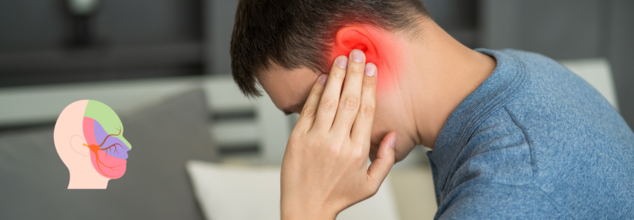- Health Conditions A-Z
- Health & Wellness
- Nutrition
- Fitness
- Health News
- Ayurveda
- Videos
- Medicine A-Z
- Parenting
- Web Stories
Experiencing Nighttime Anxiety? Avoid Doing These Things At Night

(Credit-Canva)
Anxiety often picks up pace when you are resting or when your body is at ease with many reporting their anxiety peaking at night, disrupting sleep. Although there is no clear reason why you get nighttime anxiety or panic attacks but a recent study published in the PNAS, explains that trouble sleeping due to unwanted, popping-up memories are common in various mental health problems. Th study found that when people don't get enough sleep, they struggle to control these intrusive memories. Using brain scans, the researhcers saw that this happens primarily due to the malfunctioning of the brain areas that normally help stop unwanted memories from coming up. Basically, implying to sleep loss messing up the brain's ability to block unwanted memories.
Habits That Can Cause To Nighttime Anxiety
There are many things that can make this anxiety worse as well! It's common to find yourself wide awake at night, replaying the day's events or scrolling through your phone. This happens because, as the day's distractions fade, your mind is left alone with its thoughts. According to a global survey 42% people struggle with sleep due to anxiety and 27% due work-related stress. The brain doesn't easily switch from high alert to sleep mode. Habits like checking work emails or late-night screen time keep the nervous system active. Bright lights and stimulating activities prevent the brain from slowing down, leading to lighter, less restful sleep.
Doom-scrolling
Spending too much time looking at bad news or endless videos on your phone can make you feel stressed. It's like your brain is playing a game where it keeps looking for something new, but it never relaxes. This makes your body release stress hormones, which keep you awake. Instead, try to stop looking at screens a few hours before bed. Read a book or write in a journal to help your mind calm down.
Checking Work Emails
Reading or answering work emails at night makes your brain think about work problems. This keeps you alert and makes it hard to relax. The bright light from screens also stops your body from making the sleep hormone. Try turning off work notifications and stopping work emails a few hours before bed. This will give your brain time to unwind.
Taking Certain Medications Too Late
Some medicines, like those for ADHD, can keep you awake if you take them too late. These medicines make your brain more alert, like drinking coffee. If you're having trouble sleeping, talk to your doctor. They might be able to change when you take your medicine or change the dose.
Having Caffeinated Drinks
Drinks like coffee, soda, and tea have caffeine, which keeps you awake. Caffeine stays in your body for a long time, so even if you drink it in the afternoon, it can still affect your sleep at night. Try to stop drinking caffeine by lunchtime. In the evening, drink herbal tea instead.
Eating Heavy Meals Before Bedtime
Eating big meals before bed can cause stomach problems and make it hard to sleep. Also, eating too early can mess with your body's sleep schedule. Try to stop eating a few hours before bed. If you're hungry, have a light snack. Avoid drinking alcohol close to bedtime as well.
Not Just A Migraine: Why Doctors Call Trigeminal Neuralgia The “Suicide Disease”

When pain strikes your face like a bolt of lightning, it's not just a headache or a dental issue. It could be Trigeminal Neuralgia (TN), a condition so excruciating that it has been dubbed the “suicide disease”. Experts say it’s worse than a migraine, and sadly, most people don’t even know it exists until it hits them.
What makes this pain so cruel?
Dr. Namrata Dabas, HOD and Consultant, Pain and Palliative Care at Manipal Hospital, Dwarka, New Delhi, explains that the trigeminal nerve is the largest cranial nerve, carrying pain sensations from the face to the brain. “When it gets compressed or irritated, intense, electric shock-like pain is experienced by individuals, often on one side of their face,” she says. This kind of pain isn’t just bad; it’s chronic, and the triggers are disturbingly everyday: “eating, drinking, washing the face, or even a light breeze”.
Dr. Aparna Gupta, Associate Director of Neurology at Indian Spinal Injuries Centre, New Delhi, calls this condition “nerve pain of the fifth nerve”, adding that “the pain in this condition is extremely severe and excruciating, mainly in the half of the face.” It’s not just the intensity but the unpredictability: “The pain can be episodic, lasting from a few seconds to a few minutes, or it can be chronic… in a waxing, waning manner or at times, it may spike at intervals.”
But what causes it?
While TN has several possible causes, Dr. Dabas says that it’s “mostly caused by compression of the trigeminal nerve by a nearby blood vessel loop.” Other times, it may follow a herpes zoster infection or result from a tumour pressing against the nerve. Still, she says, “TN is considered to be idiopathic, which means that no definite cause can be identified behind it in most situations.” Women and people over 50 are more likely to suffer from it.
Dr. Gupta agrees, adding that in some cases, “we found blood vessels which are surrounding the nerve, just destroying its sheath and causing the pain.” She also lists other causes like “a tumour compressing the nerve or a demyelinating condition called MS”.
When a smile or a sip can set it off
It’s not just the pain; it’s how common daily actions can bring it on. Dr. Gupta points out that activities like “smiling, chewing or brushing or eating very hot or cold food like ice cream or hot coffees… all aggravate the pain.” The randomness and relentlessness of the condition can take a huge toll on mental health.
Managing the unmanageable
“An MRI is used to detect the underlying problem,” says Dr. Dabas. If a tumour or blood vessel compression is spotted, surgery is an option. Initially, doctors often start with neuropathic medications, but these can “cause side effects or stop working over time.” In those cases, she recommends a minimally invasive procedure: radiofrequency ablation of the trigeminal ganglion. “Performed under local anaesthesia, it uses radiofrequency ablation to burn a part of the trigeminal ganglion in a controlled manner,” she says. The relief is often immediate.
Dr. Gupta also lists treatments ranging from “anti-seizure medication” to “a nerve block or a local Botox in the region where the pain occurs”. In cases where a blood vessel is the culprit, “a microdiscectomy is done.” And when it’s due to MS or a tumour, “it requires the primary treatment”.
Don't Let The Smiling 'Fit' Selfies On Social Media Fool You, Here's What Eating Disorders Can Look Like

Credits: Health and me
Someone close to you seems fine, smiling, showing up for work, posting selfies, maybe even getting compliments like “You look great, have you lost weight?” You wouldn’t suspect they’re battling a serious mental health condition but what if they are? What if their struggle is happening beneath the surface—camouflaged by societal expectations, assumptions, or even praise?
This is exactly the danger when it comes to eating disorders—a class of complex, deeply psychological conditions that too often get misrepresented, misdiagnosed, or completely missed. Many people, including healthcare professionals, still picture eating disorders through one narrow lens: a visibly thin young woman, wasting away. That image is outdated and dangerously incomplete.
“People often suffer in silence simply because they ‘don’t look sick enough’ in the eyes of others,” says Dr. Ria Talwar, Counselling Psychologist & Eating Disorders Specialist at Samarpan Health. “Many individuals living with severe symptoms of an eating disorder fall within what is considered a ‘normal’ or even higher body weight.”
Eating disorders don’t discriminate by gender, age, or size. And they don’t always show up as emaciation or dramatic weight loss. They can look like control, perfectionism, calorie counting masked as ‘health’, or persistent anxiety around meals. If we continue to rely on stereotypes, we miss the very people who most need support.
Common Misconceptions About What A Person With Eating Disorder Looks Like
Assumptions about how eating disorders look are not just incorrect—they’re actively harmful. Dr. Talwar highlights that comments like “You’ve lost weight, you look great” or “You should eat more, you’re disappearing” are often thrown around casually. But these statements can validate disordered behaviors or minimize distress. “They lead to a potential eating disorder being normalised, misunderstood, or even praised,” she says.
More dangerously, they build a mental narrative where people feel they need to appear visibly unwell to be taken seriously. This creates a hierarchy of suffering, where only the physically obvious cases are acknowledged. That mindset delays diagnosis, treatment, and recovery.
What’s more, the reality is grim: eating disorders have one of the highest mortality rates of any mental illness, both from physical complications and suicide. Every delay in recognition comes at a potentially fatal cost.
Dr. Talwar emphasizes that many clients with long-standing disordered eating go years without anyone noticing—sometimes even themselves. “We regularly see individuals who have lived with a deeply unhealthy relationship with food for years before their struggle is recognized,” she notes.
Why? Because they don’t ‘look the part.’
This is especially true for people living in larger bodies, men, non-binary individuals, or people of color—groups that have been historically excluded from the narrow portrayal of who gets eating disorders.
In many cases, these disorders are a coping mechanism for emotional pain, anxiety, trauma, or a desire for control. Food becomes a way to self-soothe, punish, or numb when feelings become overwhelming. Some people engage in disordered eating as a form of self-harm, especially when traditional outlets like talking or crying aren’t safe or available.
Eating Disorders Are Never Just About Food
Eating disorders are not about vanity or willpower. They are multi-layered mental health disorders, and food is just the symptom. Many times, they coexist with other conditions like:
- Anxiety
- Obsessive-Compulsive Disorder (OCD)
- Post-Traumatic Stress Disorder (PTSD)
- Depression
In fact, perfectionism is a common thread—people set impossibly high standards for themselves, and when they fall short (as humans inevitably do), they use food as a way to regain control or punish themselves.
Dr. Talwar puts it plainly, “Food, weight, and appearance are surface-level expressions of deeper psychological distress.”
Subtle Signs Of Eating Disorder That May Be Easy To Miss
Often, the earliest signs of an eating disorder aren’t physical at all. They show up in behaviors and mood shifts. Teachers, parents, and even close friends may miss them if they’re only looking for weight loss. Dr. Talwar outlines key red flags:
- A sudden obsession with “clean” eating or calorie tracking
- Avoidance of meals or eating in secret
- Anxiety or irritability before and after eating
- Checking the mirror or weighing themselves compulsively
- Social withdrawal, especially around food-related events
- Bathroom visits right after meals
Sometimes, these behaviors are dismissed as “just being healthy” or “dieting.” But the difference is in the distress, rigidity, and secrecy. And often, the individual doesn’t even realize their behavior is harmful.
What helps most? Not confrontation—but compassionate conversation. Create a safe space, without judgment, where someone can speak freely. That’s often the first real step toward healing.
What Role Does Social Media Plays In Detection And Intervention?
In the digital age, social media can make eating disorders both more visible and more dangerous. It's a tool but how we use it matters. “Social media is a powerful force that cuts both ways,” Dr. Talwar says. On one hand, curated fitness journeys, diet fads, and aesthetic 'health' content can subtly glorify disordered eating. Young people are especially vulnerable to these unrealistic comparisons.
On the other hand, the internet has helped destigmatize the conversation. Many people realize they’re struggling when they see others openly share their recovery journeys, therapy tips, or mental health insights. Hashtags like #EDRecovery and #BodyNeutrality have helped people find community and support.
“Monitoring and navigating the medium requires media literacy, critical thinking, and accountability from platforms themselves,” says Dr. Talwar. More education, more empathy, and more intentional content can shift the narrative from comparison to connection.
What Needs to Change?
- Stop assuming you can tell who’s struggling by how they look
- Reframe praise about weight loss—it may reinforce dangerous behaviors
- Start conversations with empathy, not judgment
- Advocate for broader training for healthcare providers, educators, and families to recognize diverse signs of eating disorders
- Hold media accountable for promoting healthy and inclusive representations of bodies and food
Eating disorders don’t need to be visible to be serious. The pain is real—even if the person looks “fine.” Recovery starts with recognizing the truth, eating disorders wear many faces, and all of them deserve support. Let’s stop waiting for someone to look sick before we take their suffering seriously.
'Anxious Mondays' Can Lead To Stress That Lasts Biologically For Months; Tips To Destress A Day Before

Credits: Canva
You wake up on Monday with a knot in your stomach. The week hasn’t started yet, but something about the shift from weekend to weekday stirs unease. Turns out, that feeling isn’t just in your head—it’s in your biology.
New research published in the Journal of Affective Disorders shows that Monday-specific anxiety doesn’t just spike your mood for the day—it leaves a biological trace for months. Scientists studying over 3,500 older adults found that those who reported anxiety on Mondays had significantly higher levels of cortisol—the body’s main stress hormone—two months later. Not just the next day. Not just that week. Two months.
This biological imprint, referred to by researchers as the “Anxious Monday” effect, hints at something much deeper: a cultural and physiological bond between the start of the week and long-term health risk—especially for the heart.
Here’s the kicker: this isn’t just about hating your job. In fact, the study showed that even retirees—people who no longer face Monday morning meetings, work emails, or deadlines—showed the same spike in stress biomarkers.
This suggests that our nervous systems have been conditioned over a lifetime to associate Mondays with stress. The researchers propose that repeated exposure to structured weekly rhythms—decades of Monday wake-up calls, commutes, and school schedules—may wire our physiological stress response to treat Monday like a danger signal.
Professor Tarani Chandola, lead author and medical sociologist at the University of Hong Kong, explains, “Mondays act as a cultural stress amplifier. For some older adults, the week’s transition triggers a biological cascade that lingers for months. This isn’t about work—it’s about how deeply ingrained Mondays are in our stress physiology, even after careers end.”
How Does Monday Blues Have A Deep Biological Impact?
The study, based on data from the English Longitudinal Study of Ageing (ELSA), analyzed hair samples to detect long-term cortisol levels. Here's what stood out:
23% Higher Cortisol Levels: Participants who felt anxious on Mondays had 23% more cortisol in their hair, a biomarker of long-term stress.
Only Partially Linked to Mood: Interestingly, only 25% of this effect was explained by feeling anxious on Mondays. The remaining 75% was due to how strongly the body reacts to Monday anxiety, compared to other days.
Not Limited to the Workforce: The same cortisol patterns appeared in both working individuals and those who had long retired.
The physiological pathway at the center of this research is the HPA axis—the hypothalamic-pituitary-adrenal axis—which regulates how our body reacts to stress. Chronic dysregulation of this system (like from persistent cortisol elevation) has been tied to a wide range of health conditions:
- Cardiovascular disease
- Insulin resistance
- Immune dysfunction
- Mood disorders
Why Mondays May Be Linked to Heart Attacks?
If you’ve heard that heart attacks tend to spike on Mondays, this research may explain why. Previous epidemiological studies show a 19% increase in heart attacks on Mondays compared to other days. While we’ve often blamed this on workplace pressure or weekend lifestyle choices, the new data suggest a deeper biological reason.
The stress we associate with Mondays isn’t just an emotional reaction—it’s a neuroendocrine event. And repeated, low-grade Monday dread may create an invisible stress load that adds up over time, increasing cardiovascular risk long before we feel any symptoms.
The implications of this study go beyond personal wellness. If a single day of the week can consistently activate a harmful biological stress response across a population, then addressing Monday-specific anxiety could become a novel lever in reducing chronic disease risk—especially among aging adults. It also raises new questions for health practitioners:
- Should stress management advice be tailored for the start of the week?
- Can interventions that ease the Sunday-to-Monday transition actually lower long-term cortisol exposure?
- Could community-based programs or calendar redesigns mitigate this cultural imprint?
We're looking at a public health opportunity hidden in plain sight.
Tips To Ease Stress and Anxiety Starting On Sunday
If Mondays are quietly sabotaging your biology, it makes sense to shift the strategy upstream—to Sunday. Here are evidence-backed ways to dial down Monday dread before it peaks:
1. Preempt the stress narrative
Instead of mentally loading Monday with tasks and expectations, treat Sunday evening as a soft ramp into the week. Avoid telling yourself “I have a mountain of work ahead.” That mental rehearsal activates the stress response prematurely.
2. Create a Sunday ‘cool-down’ routine
A Sunday evening walk, warm bath, or 15-minute meditation session can reduce cortisol levels and ease the transition. Studies show that even 10 minutes of slow breathing can trigger the body’s relaxation response.
3. Don’t let sleep slide
Poor sleep on Sunday night (sometimes called “Sunday scaries insomnia”) makes your body more vulnerable to stress hormones on Monday. Prioritize a consistent sleep window and limit screen time 2 hours before bed.
4. Reframe Monday mornings
Make your Monday morning gentler where you can. Even small tweaks—like delaying meetings until mid-morning, eating a nourishing breakfast, or listening to music—can modulate the HPA axis response.
5. Check your calendar pressure
Over-stacking Mondays with responsibilities may reinforce the stress imprint. If possible, distribute demanding tasks throughout the week to create a more balanced cognitive load.
What this research really reminds us is that culture shapes biology. The seven-day week is a human invention, but our bodies have adapted to it in surprisingly profound ways.
As we age, the decades of rhythms—school bells, shift changes, family routines—don’t just fade. They form a sort of physiological memory that can quietly drive health outcomes well into retirement and among those rhythms, Monday holds a special place.
So if you’ve ever felt that Mondays hit harder than they should, you’re not imagining it—and now, science is backing you up. The challenge isn’t just to push through the day, but to understand how deeply it’s embedded in our biology. The opportunity? Start by reshaping your Sundays. Your heart may thank you months from now.
© 2024 Bennett, Coleman & Company Limited

